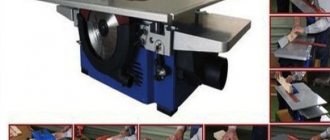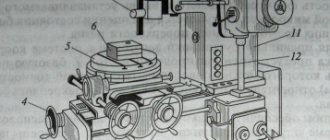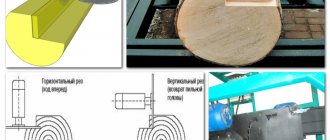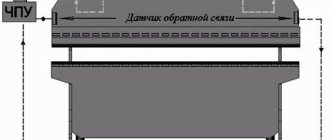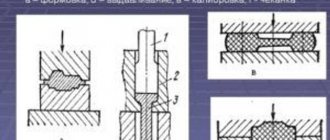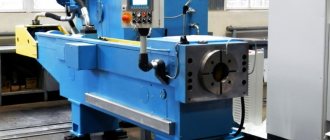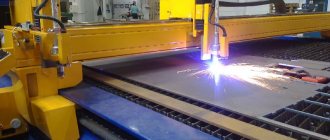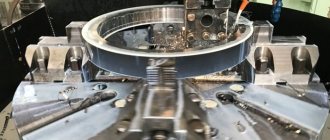Vacuum forming machine
After the matrix is ready, it is placed in a vacuum forming machine and covered with ABS plastic, fiberglass, polyethylene, PVC, PET, organic glass or polystyrene. Each of the materials is individual, but is distinguished by sufficient strength and wear resistance. The material is then heated to a certain temperature, causing it to melt and take the form of a matrix.
The next stage is cooling and processing the product. If required, the product is painted and dried. In addition, you can optionally apply an image to the product using digital printing or pasting with self-adhesive film. As a result, vacuum molding allows you to obtain a durable, due to the absence of seams, and voluminous product of any shape.
Features of the technological process
The main feature of this technology is the possibility of thermoforming a product at a relatively low vacuum, the creation of which does not require powerful equipment. This significantly reduces energy consumption and, as a result, reduces the cost of the final product.
Vacuum molding of ABS plastic consists of several stages:
- The polymer blank is installed in a vacuum forming machine and securely fixed using a clamping frame.
- A sheet of plastic is heated to a certain temperature in the chamber of the device. To ensure uniform heating of sheet material, quartz or infrared emitters are usually used. Sagging of the material during the heating process is not allowed. If the photocell detects a change in the geometry of the heated workpiece, then air is supplied to the chamber to adjust the shape of the sheet.
- Under the influence of vacuum, the softened sheet of polymer is drawn in and takes the form of a matrix. Depending on the requirements for product quality and the material used in production, the vacuum forming process can be combined with stamping technology by pressing the workpiece against the matrix with a punch.
- The workpiece is cooled by forced air supply. The use of fans reduces the time for complete cooling of the polymer by 30%.
- After cooling, the material hardens and is removed from the chamber of the vacuum molding machine. For this purpose, pumping devices are used that create pressure between the matrix and the workpiece.
- The last stage is trimming and final finishing of the product. When producing products with complex geometry, another stage is used between heating and direct thermoforming of the product - intermediate stretching or blowing of the workpiece. This process is used to equalize the thickness of the sheet material during the heating process.
Vacuum forming machine - a reliable assistant in production
According to its technical characteristics, the vacuum forming machine is considered universal. Because on the one hand it is easy to use, on the other hand it is ergonomic. The principle of operation is also quite simple: a heated workpiece is placed in a vacuum chamber and, during the process of pumping out air under the influence of atmospheric pressure, the workpiece takes the required shape. Smoothing of the wall thickness is ensured by a special mechanism equipped with a vacuum forming machine. And to ensure production safety, vacuum forming equipment is equipped with a locking system.
If fast production is required, then vacuum forming machines are an excellent choice. Their main application is not only in shaping, but also in stretching and flanging of transparent materials. This forming equipment is distinguished by its own characteristics. Firstly, the vacuum forming machine has a user-friendly interface that is easy to use. Secondly, the control is carried out automatically, with power, heating, molding, as well as cutting and, most importantly, laying the product. Vacuum molding allows you to make absolutely any product: from disposable tableware to car tuning parts. All this can be achieved thanks to vacuum forming machines.
Plastic Vacuum Forming Machine
Considering the specifics of the operation of a molding machine for vacuum molding of plastics, it is advisable to take care in advance to create favorable conditions for the operation of this machine. This is truly a very important point that will ensure not only stability, but also a reliable workflow.
Plastic Vacuum Forming Machine
Now we will look at several points that need to be paid special attention when installing a plastic molding machine:
- Dryness of the room - required to ensure that moisture does not get inside the machine, affecting its sensitive areas. It is advisable to use a hood in the room, which would allow you to get rid of excess moisture in the room.
- There is enough space for placement - a significant role should be given to the area where the vacuum machine will be located. It is advisable that there is no other electronic equipment near it.
- Stable power supply – this point is especially important, since for the stable operation of the molding machine, a constant supply of electricity is required. If any interruptions occur, then it will not be possible to avoid failures during the work process.
- Smooth and durable surface for installation - since the installation itself is massive and very productive, the surface should be as smooth as possible. If this parameter does not correspond, unnecessary fluctuations may occur during operation.
By following these few tips, you can use your machine exactly in the conditions it requires to operate reliably. Accordingly, performance indicators will also fully correspond to what is indicated in the technical characteristics of this unit.
Price of vacuum forming and equipment
The cost of vacuum molding directly depends on factors such as material, product size, initial data, circulation, and the complexity of molding. Therefore, if you want to know the exact cost of the future product, then you should take into account all these nuances in advance. Our company’s specialists will help you with this, who will not only competently select high-quality materials, but also make all the necessary calculations. Also, the price of vacuum forming depends on the complexity of forming and processing the product. At the same time, accuracy and professional precision will allow you to obtain a high-quality product.
As a rule, the more complex the product, the more expensive it is. At the same time, this price is justified and, to a large extent, pays off over time. This is due to the fact that the resulting product has an attractive appearance, is obtained without seams or gluing, due to which it makes the proper impression and looks very realistic. This is precisely what becomes the key to the success of vacuum-forming products.
If you are interested in the price of machines and machines for vacuum forming, we recommend visiting the “Forming Equipment” section, where you can familiarize yourself with the models, technical characteristics and cost of equipment for vacuum forming.
DIY vacuum forming machine
Do-it-yourself vacuum molding of plastic is a generally simple process, but it requires specialized equipment and materials. That is why many of our compatriots have chosen the production of plastic products by vacuum molding as their main type of business.
No special knowledge or special skills are required to produce products using this technology. Materials available; You can buy ABS plastic for vacuum molding directly from the manufacturer at a fairly affordable price. The cost of raw materials from the Middle Kingdom varies from 87 to 150 rubles/kg, depending on the thickness of the sheet. But the price of industrial samples of equipment may be prohibitive for many beginning businessmen. To produce single products up to 4 mm thick at home, you can make a simple press for vacuum molding of plastic with your own hands.
To manufacture the machine, the following materials and mechanisms will be required:
An oven will be used as the heating element of the machine. To create negative pressure, use a vacuum cleaner. The press manufacturing process consists of the following stages:
- You need to make a frame from wooden blocks, the dimensions of which are slightly smaller than the dimensions of the oven.
- A vacuum chamber is made from plywood. A box is assembled, the dimensions corresponding to the frame. You need to drill a hole in the side wall with a diameter corresponding to the cross-section of the suction pipe of the vacuum cleaner.
Important! To ensure tightness, all joints must be coated with sealant before assembly.
- The working surface is made from fiberboard. The dimensions exactly match the size of the vacuum chamber. The peculiarity of the working surface is that in order to remove air evenly, it is necessary to drill many holes in it. Hole diameter 3 mm, pitch 3 cm.
Important! To prevent the working surface from bending inward when negative pressure is created in the chamber, a spacer must be installed in the center of the chamber equal to the depth of the chamber.
- We screw the working surface to the vacuum chamber. To ensure a tight seal, the joints should be coated with sealant.
- We connect the vacuum cleaner pipe to the chamber and seal the joints.
That's it, the simplest press for vacuum molding of plastic is ready. Next, you should make a matrix. The simplest option is plaster casting. The vacuum forming process is as follows:
- Place the matrix in the center of the working surface.
- Connect the vacuum cleaner to the connection coming out of the vacuum chamber.
- Attach a sheet of plastic to the timber frame. For fixing with staples, it is best to use a furniture gun.
- Preheat the oven to 190-200 C° and place a frame with plastic in it for heating.
- After the plastic has softened, we place the frame on the mold (plastic on the matrix), press it and turn on the vacuum cleaner.
- After removing air from under the plastic, continue the process for 15-20 seconds until the workpiece cools completely.
We take out the workpiece, remove the mold, cut off the excess. Everything is simple and cheap. Now, knowing the design of the machine and the features of the technological process, only you can decide what is needed to create a business: buy equipment for vacuum molding of plastic or make a press yourself.
Vacuum forming
,
hot vacuum forming technology
is the production of products from thermoplastic materials in hot form using vacuum or low air pressure.
This technique is used mainly in the serial production of volumetric plastic products, but in some cases it can also be used for single runs.
Main components of a vacuum forming machine
Among the main components that may be included in the machine kit are:
- pump unit or, as it is also called, a vacuum system that pumps air out of the chamber and creates a pressure difference in it;
- air-injecting fans that ensure uniform heating and cooling of the plastic workpiece;
- electric heating elements (heaters), which provide the workpiece temperature necessary for operation;
- a clamping unit consisting of a frame system to give the workpiece the required shape;
- machine stand;
- a frame on which the vacuum chamber is located;
- sealed chamber for the vacuum process;
- compressor, pumping air from the chamber;
- a system of sensors and regulators for changing the heating parameters of the matrix, monitoring the modes of evacuation and processing of the workpiece.
To carry out the vacuum forming process, a necessary element is the presence of a special matrix on the basis of which the product is produced. Such a matrix is made according to the size and shape required for the manufacture of the product. Its material is special heat-resistant and durable compounds that allow vacuuming to be carried out more than once.
Depending on the degree of automation of the vacuum forming process, such machines can be equipped with various additional equipment such as:
- workpiece heating panel control system;
- sensors protecting the workpiece from sagging;
- control system for workpiece stretching (installation dome);
- control system for the mechanism for changing the table level and emergency lines of limit reed sensors with the ability to disable the systems;
- sensor and time controller for forming operations;
- sensor and time controller for workpiece cooling operations;
- control system for the process of “shooting” the workpiece from the matrix;
- adventure system from automatic to semi-automatic operating mode.
How does it work?
Operating principle of a vacuum forming machine.
- The selected master model is installed on the surface of the desktop and secured to the plywood base using self-tapping screws.
- For successful thermovacuum molding of a plastic sheet, the master model is first heated.
- A polymer sheet is inserted into the metal frame from above and secured with special clamps.
- To ensure uniform heating of the plastic sheet over the entire surface area, halogen lamps are turned on.
- After a few minutes, the polymer sheet, heated to a thermoplastic state, is placed on the master model and secured, forming a sealed molding chamber between the sheet and the molding table.
- Air is pumped out from the molding chamber due to the operation of a vacuum cylinder, in which a pressure of 0.8 atmospheres is maintained. Pumping out air creates a vacuum, thereby attracting plastic to the models and the molding table. The molded product is checked for wrinkles and irregularities, and, if possible, the contours are corrected manually or using equipment.
- The cooling module is turned on, which accelerates the cooling of the product to the removal temperature, thereby increasing the speed of production of plastic molds.
- Afterwards, the finished polymer product is removed from the master model using a pneumatic molding device (supplying a certain volume of air into the space between the workpiece and the plastic).
- The frame with the molded sheet is disconnected from the working forming table.
- The removed polymer mold is cut along the contour with a construction knife. This way you get rid of excess plastic.
- The process is complete. The plastic product is ready for use.
All activities related to the production of plastic molds are carried out by a qualified operator.
You can watch a video of the vacuum forming machine in action on our YouTube channel.
Why are heating elements needed, what types are there?
Heating elements perform the function of preheating polymer raw materials, adhering to several basic rules:
- the sheet should be heated evenly over the entire surface area with decreasing heating intensity from the edges to the center (from heating up to 100% power at the edges to heating up to 50-60% power in the center);
- The heating temperature of the plastic must be regulated.
All types of heaters are aimed at uniform heating of polymer raw materials and regulation of heat supply. They have the following distinctive parameters among themselves:
- the wavelength supplied by infrared emitters to the polymer sheet;
- location of heating elements on the VFS;
- distance between the heating plate and plastic;
- heater type;
- distance between heating elements;
- the presence of reflectors to create the necessary direction of heat flow;
- adjustable temperature of heating elements;
- the presence of additional criteria that ensure uniform heating of the sheet polymer.
There are five main types of heaters: tubular electric heater, quartz emitter, KGT lamp, ceramic heater, halogen lamp. Let's look at each of them in more detail.
TEN – tubular electric heater
The tubular electric heater has a wavelength of over 6 microns, which significantly affects the heating of the product and is only suitable for certain types of plastic polymers. The main advantages of this type of electric heater are the low cost of products in comparison with other options for heating lamps and ease of manufacture. The disadvantages of this type of product include the following.
- The ceramic base does not include reflectors, which negatively affects the transmission of radiation: they are poorly scattered;
- The energy consumption is too high, so the cost of the heater takes too long to pay off;
- Segmental heating of polymer material is impossible;
- The tubular electric heater does not have protective installations against fire;
- Heating elements have ceased to be used in vacuum forming equipment since 2000, as more modern versions of heating lamps have appeared.
KGT lamp
The KGT lamp has a wavelength shorter than 1 micron, which negatively affects the quality of heating of sheet polymers: infrared (IR) rays do not pass through transparent or colored plastic, which makes it difficult to distribute heat evenly over the surface of the polymer. KGT lamps do not have reflectors, so they should be purchased additionally. Most often, the type of heating panels in question is used at home in the homemade production of polymer molds (provided there is sufficient experience working with KGT lamps) - the thermal emitter is suitable for dark plastics, superimposed on the simplest mini-matrices and master models. The advantages of KGT lamps include the speed and controllability of heating, but numerous disadvantages force us to turn to other, more profitable heater options.
Infrared ceramic heater
Infrared ceramic heaters have a wavelength of 3 to 6 microns, and this gives them an advantage over other types of heating lamps. Firstly, the medium wave range helps to heat the plastic sheet evenly over the entire surface area. Secondly, the use of heat reflectors is not necessary, because infrared rays easily pass through the polymer material without additional means of dispersion. In addition, ceramic heaters do not create a fire hazard. Today, this type of emitter continues to be actively used, but their disadvantages make us think about the advisability of using the above-described heating lamps in our own production. Infrared ceramic heaters are considered economically unprofitable due to high energy consumption with a long time to adjust the temperature regime and due to insufficient heating of thick plastic sheets.
Infrared quartz heater
Infrared quartz heaters have a wavelength from 1.6 to 4 microns, which is the best option for uniform heating of plastic polymer. Quartz heaters are valued in EU countries for the speed of heating the sheet surface to the desired temperature, for good dispersion of heat rays, for an excellent price/quality ratio, for the ability to quickly switch parameter settings and place the equipment in standby mode. The disadvantages of this type of heater include the tendency to periodic repairs, since quartz panels fail when turned on/off frequently.
Halogen lamp
Halogen lamps have a stable wavelength of 1.2 microns. When creating halogen lamps, the disadvantages of CHT heaters were taken into account, and today their use is no less popular than the use of infrared quartz heating panels. Heat rays penetrate much deeper into the polymer, uniformly heating all its areas to the required state of plasticity, thanks to special additives in the new type of quartz glass, heating elements and reflectors. Please note that each lamp must have its own aluminum reflector; in addition, the heating elements are arranged among themselves in a certain sequence, and their power is regulated by the phase-pulse method, which is not very cheap. It is also worth noting that if you frequently turn the device on and off, it will fail faster.
Halogen lamps are an excellent option for installation on VFS for large-scale production. They perfectly heat polymer sheets of any color and thickness, and at the same time belong to an affordable price category among other heating device options.
What function does a vacuum pump perform?
The vacuum pump simultaneously performs several functions, without which work on a vacuum forming machine becomes impossible. Firstly, it is a complete pumping of air from under the inner surface of the heated plastic. Secondly, it reduces the pressure between the master model and the stretched sheet of polymer. Without a vacuum pump, the plastic will not “tighten” the workpiece and the molding process will stop.
Vacuum forming table: how to choose the right size?
The choice of a table for vacuum forming should be approached responsibly, because the overall dimensions of the plastic mold determine the number of master models from which plastic copies will be made simultaneously. It is necessary to take into account that the size of the forming table directly affects the price of the vacuum forming machine, so it is worth calculating the required equipment performance in advance in order to choose the most optimal option.
If you are launching large-scale production, then of course you should choose a VFM model with a working surface of large dimensions: 2000x1000, 1400x700 mm. Accordingly, when producing a smaller number of products, you should consider options for vacuum forming equipment with table sizes of 920x810 and 700x700 mm. In addition, it is necessary to take into account the dimensions of the molded master models - their length, width and height - not forgetting to add 100 mm on each side to the calculated values.
Work tables for vacuum forming that are correctly selected in all respects will fully pay for themselves. Otherwise, you will be faced with the unprofitability of VFM, since if used irrationally, large losses of plastic occur during the molding process (extra plastic scraps, vacuum). In some cases, the problem is solved by the method of dividing the table into zones, but this method is not suitable for everyone, because very often air does not leak out, and the edges of the formed plastic models collapse at the base.
Which is better: a vacuum molding machine or an injection molding machine?
The injection molding process involves making a mold and pouring polymer raw materials into it under pressure using injection molding machines. The plastic molding method is more complex in production terms and expensive, because the cost of the mold reaches at least 1 million: it is not designed for stamping a large number of finished products. Only one-piece copies are required, since molds made from injection molding machines are difficult to sell. Vacuum forming machines have always been and will be in demand on the sales market until a more profitable replacement is invented for them.
